Date: 13 May 2018
We arrived in Siem Reap yesterday and after a good night’s sleep, it was another early wake up today. We would be visiting Cambodia’s national icon — the world famous Angkor Wat temple complex. I wanted to visit Angkor Wat (“wat” is Khmer/Thai for ‘temple’) to catch the sunrise but my girlfriend was not very keen on waking up at 4am to try and get inside Angkor Wat as soon as the gates open at 5am. But when I got there later, in a way it wasn’t a major miss… and you’ll understand why later in the post.
If you do wish to catch the sunrise at Angkor Wat, here are some tips. Gates open at 5am but you do have the option to buy tickets the day prior. The Angkor Park ticket counter is a few kilometers outside the temple complex.

You have three different ticket options:
- 1 Day ($37): This ticket is valid only on the day of purchase.
- 3 Days ($62): This ticket is valid for 10 days from the date of purchase. You have the option to choose which three days you wish to visit the Angkor temples.
- 7 Days ($72): This ticket is valid for one calendar month from the date of purchase. You have a whole month in which to visit the Angkor temples on the seven days of your choice.
Entry tickets sold after 5pm are valid for the following day. So you can purchase the 1 Day pass the day prior this way. The Angkor Park ticket counter is open from 5am to 5:30pm daily. Those are more or less the timings for Angkor Wat as well.
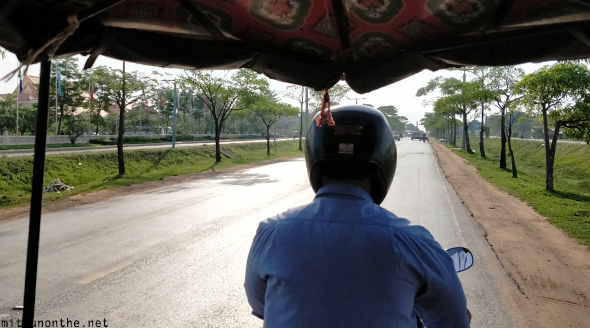
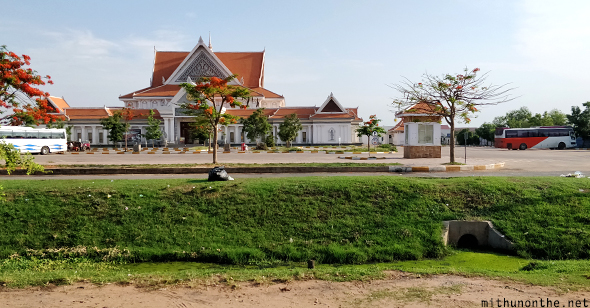
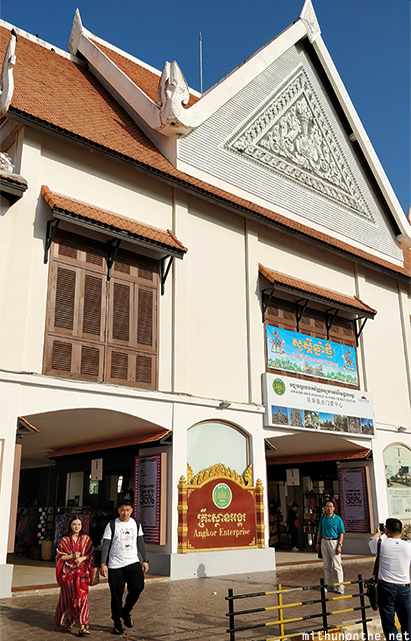
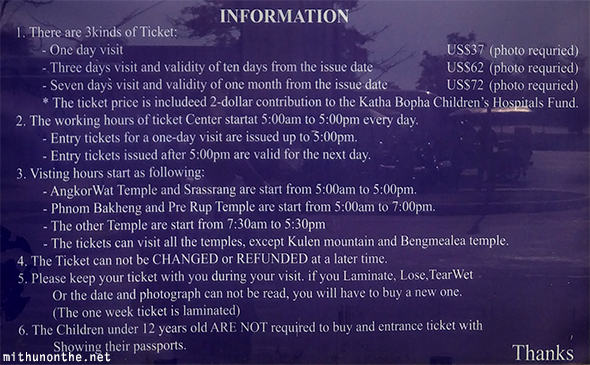
You have many counters to purchase tickets from (using cash and credit card) but expect it to be busy as you are not the only one who knows about the whole “catch the sunrise at Angkor Wat” experience. Once you have your tickets, you have to then get to Angkor Wat which is a 15-20 minute drive to the main entrance of the temple.
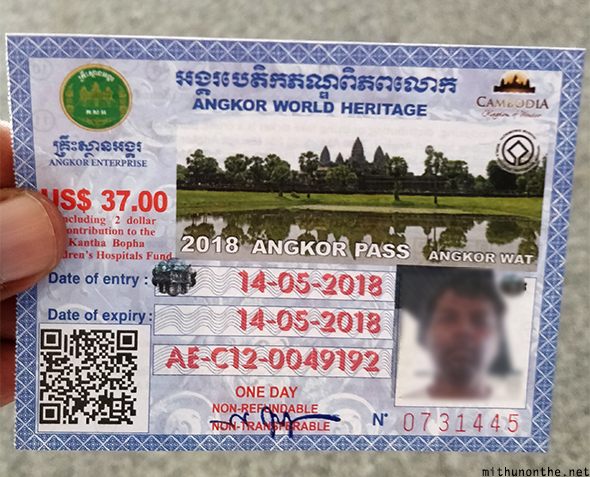
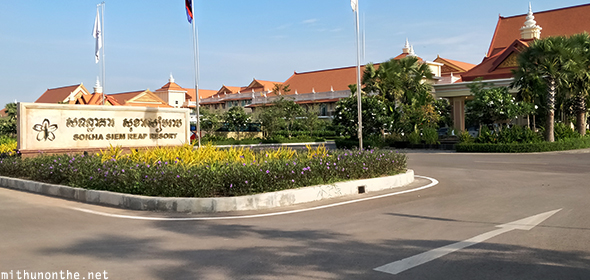
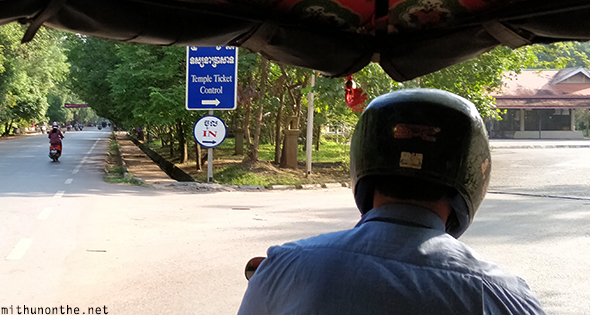
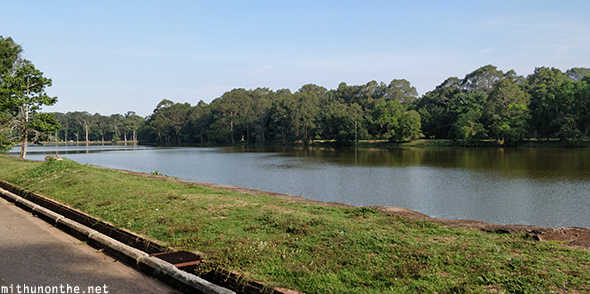
Up until now I was shooting using my phone camera.
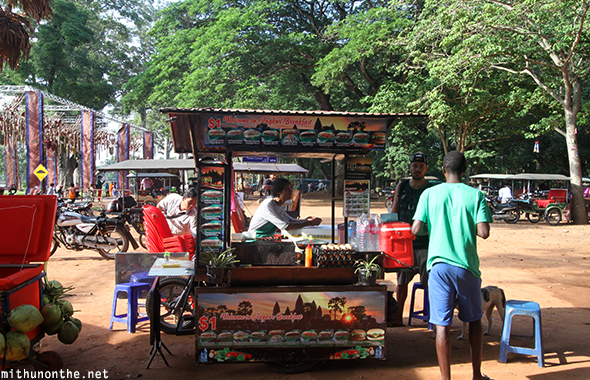
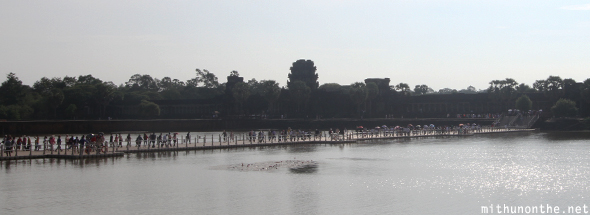
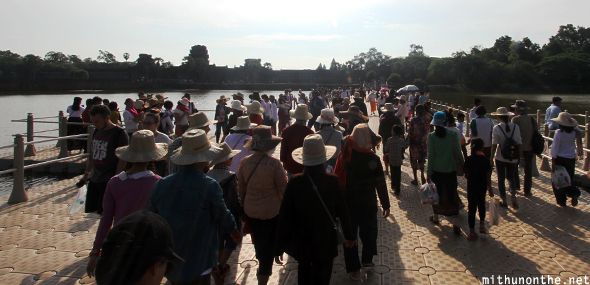
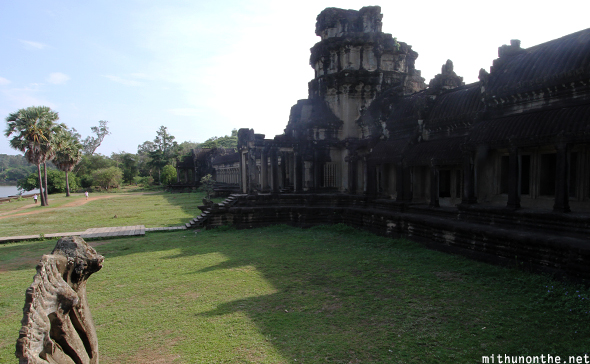
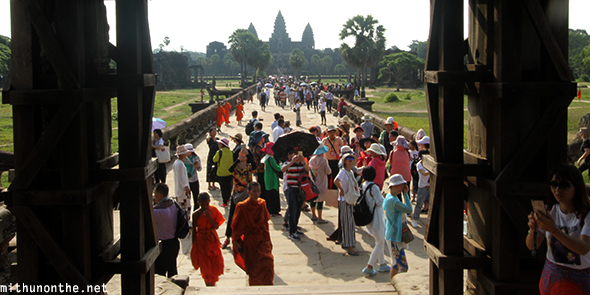
As for why I said waking up so early for a sunrise viewing wasn’t a big miss, this is why…
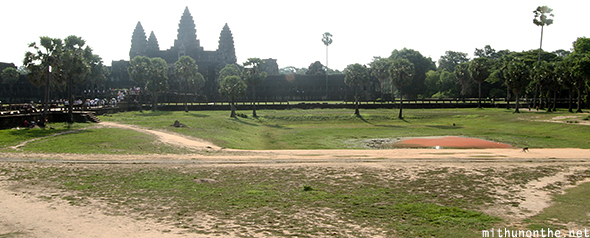
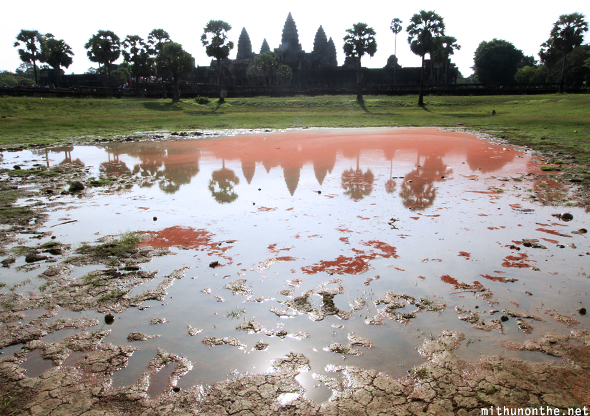
So word of advice, it would be a better idea to visit Siem Reap during or after rainy season (May to November). Not that Angkor Wat isn’t impressive all year round but if you want that photo, visit when the ponds are full.
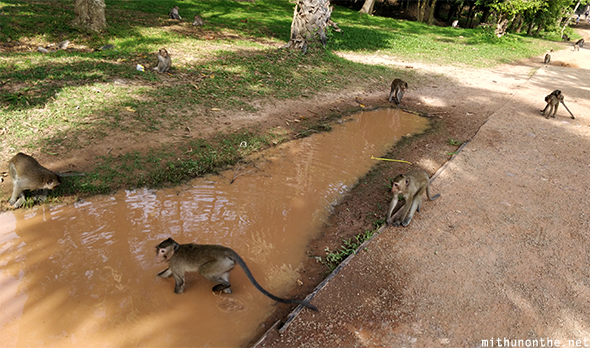
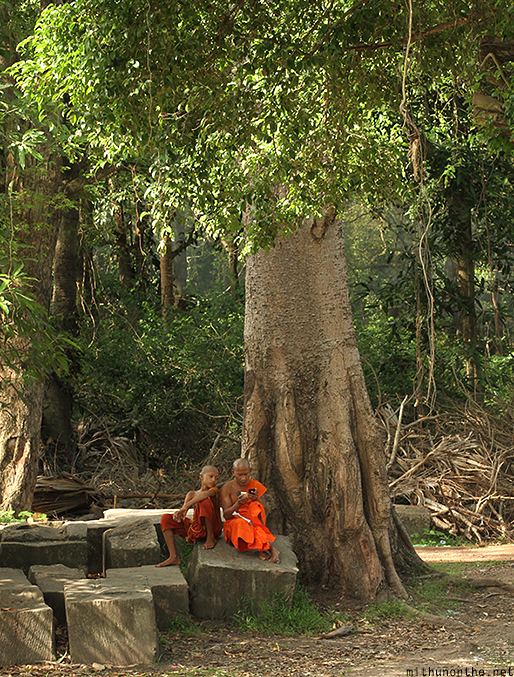
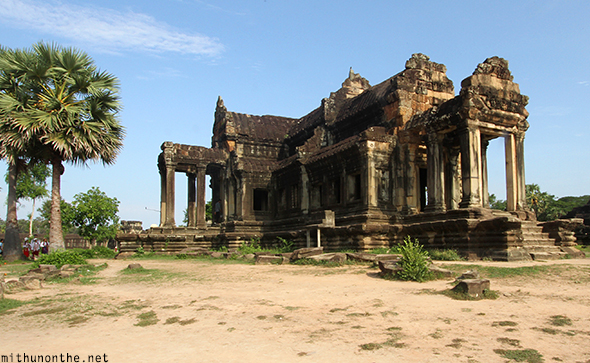
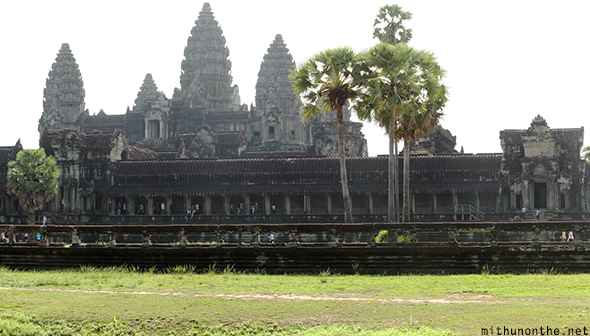
A brief history on how Hinduism reached Cambodia. The ‘Angkor Empire’ is traced back to a 9th century king named Jayavarman the 2nd (year 790 – 835). I could not find any historical links tracing his origins back to India but his precedents were from South East Asia that saw the Tamil empires (from south India) — Pallavas (3rd – 9th AD) and Cholas (9-13th AD) — conquer parts of South East Asia, especially Java (Indonesia) and surrounding lands (which is how Bali remains a Hindu-dominated island).
King Suryavarman II began the construction after ascending to the throne in 1113. Originally, Angkor Wat was built as a Hindu temple in honour of Lord Vishnu. But towards the end of the 12th century, King Indravarman III (his reign lasted 1295 – 1307) established Theravada Buddhism as the state religion (practiced to this day by most Cambodians) and Angkor Wat has since been used as a Buddhist temple. That said, even now, with all the restoration work going on, Hinduism makes up most of Angkor Wat’s heritage.
It’s these Hindu kings who spread, not just the religion, but also the mother of all Indian languages — Sanskrit — to this part of the world. Even Cambodia’s former name Kampuchea is itself is derived from the Sanskrit name Kambojadesa. After many battles between neighbouring warlords and later the Cham dynasty, the Angkor empire fell. Angkor Wat was abandoned for centuries. It was during the French colonial era in the early-20th century that conservation and restoration of the Angkor temples began. Damage caused by plant growth, fungi, ground movement, wars (Cambodia was caught in the crossfire during the Vietnam war) and looting were all causes for the deterioration. Conservation efforts were halted for around 20 years during the Khmer Rouge as well. Efforts resumed in 1992, when Angkor Wat became a UNESCO World Heritage Site, and teams from around the world (including India) helped with the restoration efforts. Restoration work continues to this day thanks to funding from foreign nations like India, China, Germany, Japan, United States and so on (all over various periods).
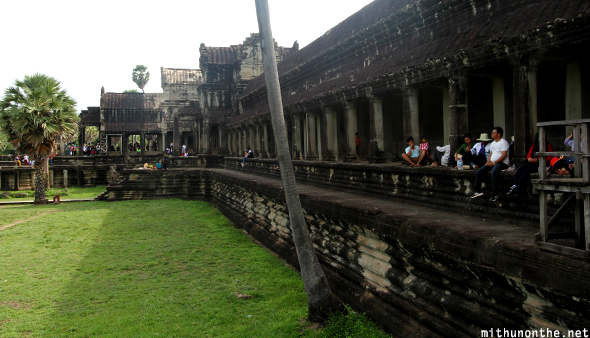
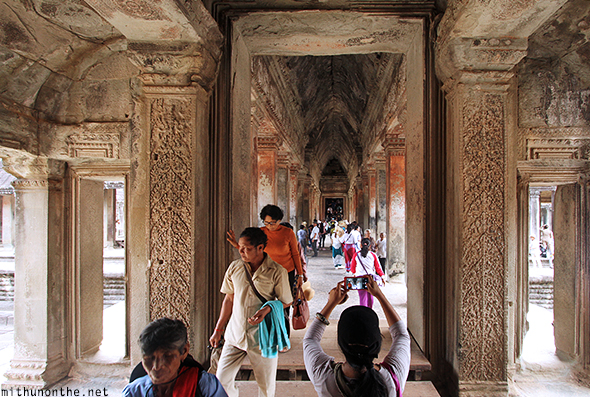
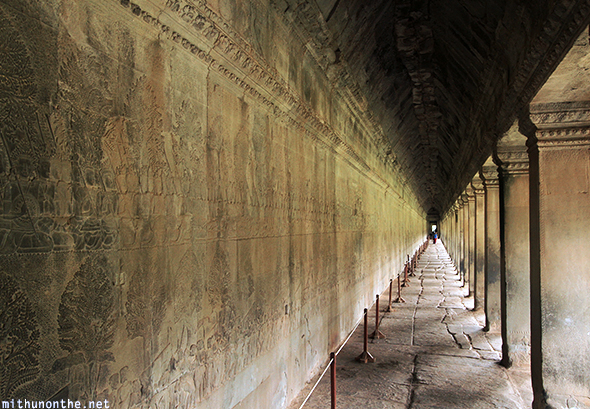
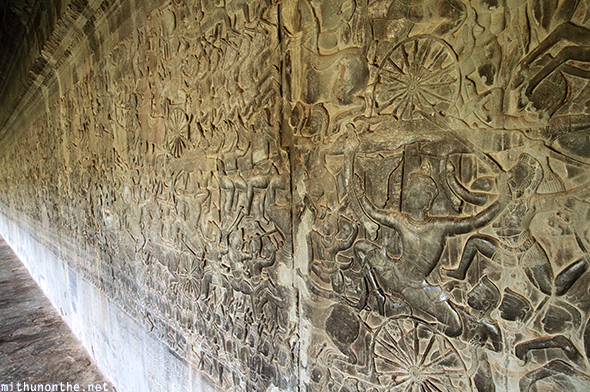

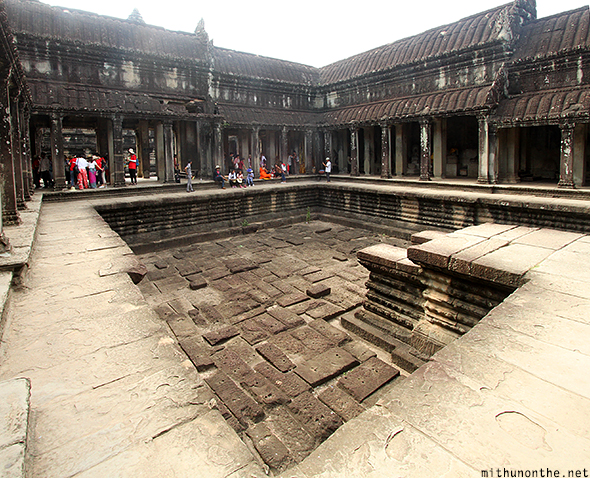
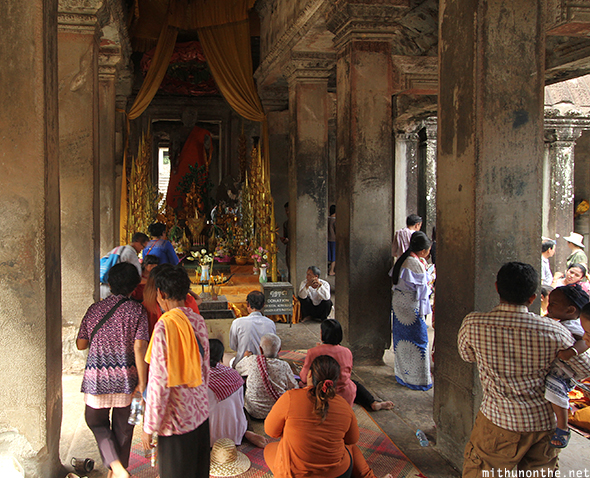
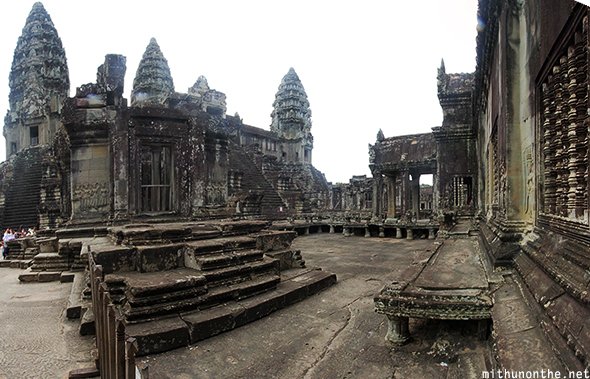
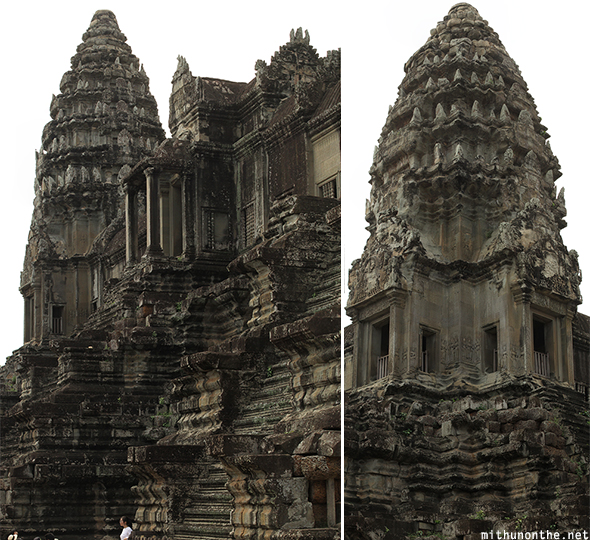
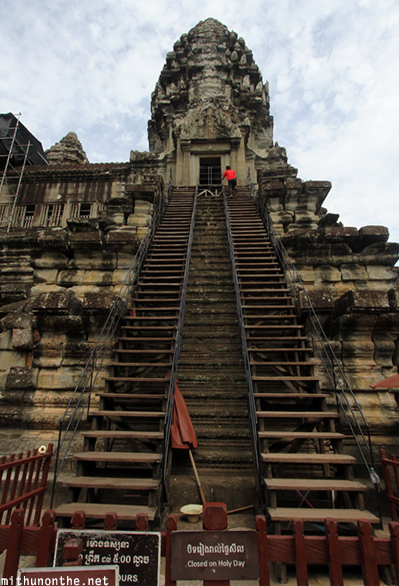
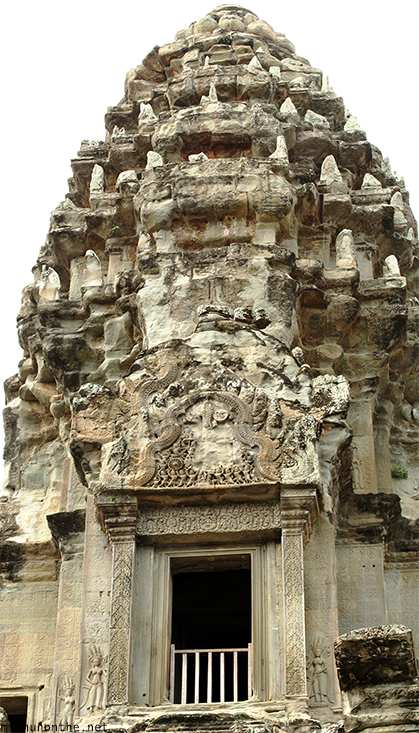

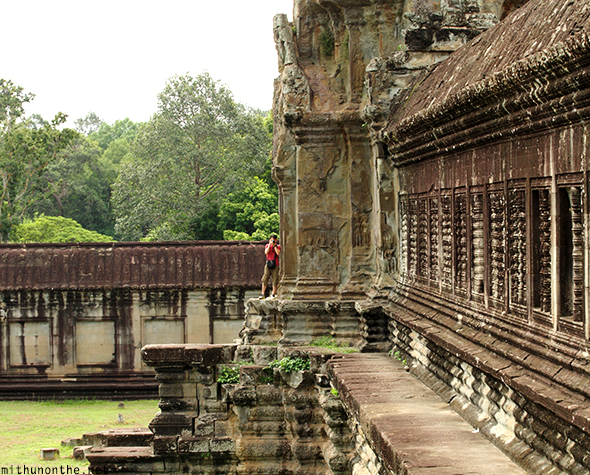
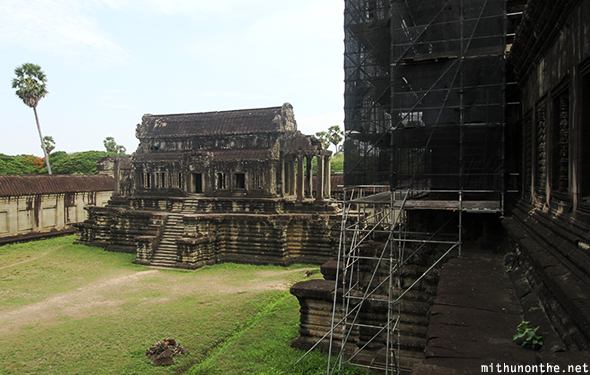
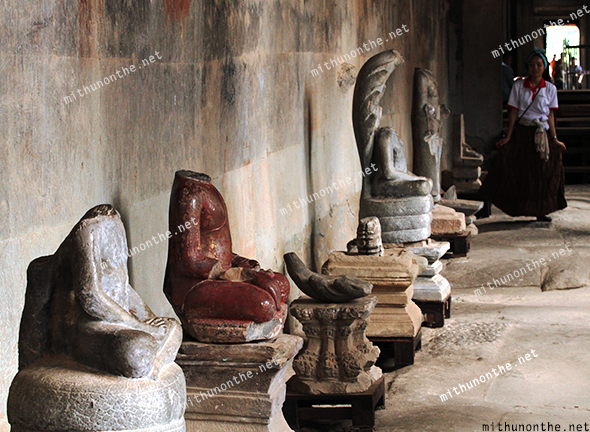
Many archeological items from Angkor temples were stolen over periods and artifacts have been sold as antiques or found their way into foreign museums. France returned some but many others remain in private collections around the world. As for why I watermarked the above photo a bit too much, it’s to prevent the Hindu nationalists from using my photo in their fake news campaigns on social media to claim Muslims damaged these monuments.
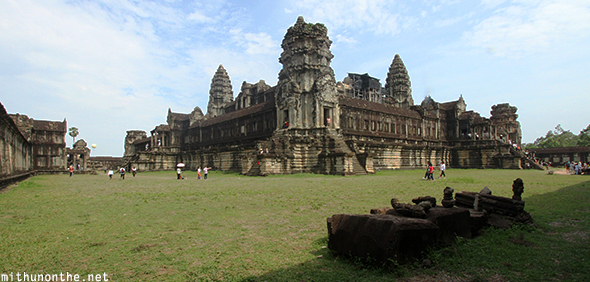
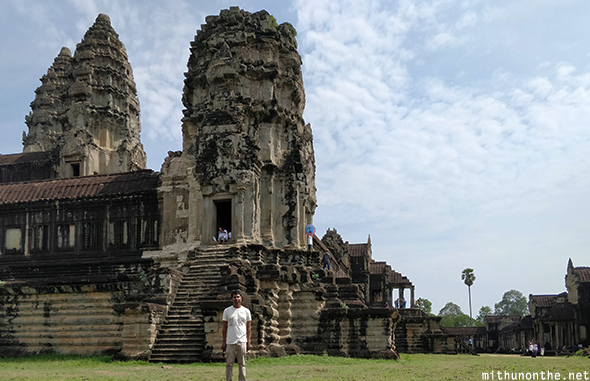
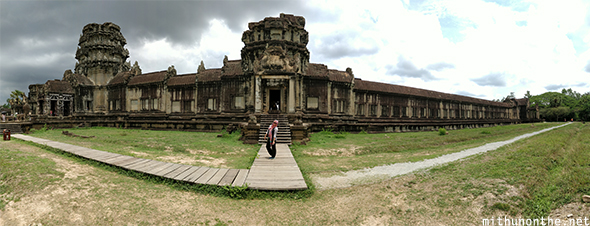
At 402 acres, Angkor Wat is the largest religious monument in the world. It’s not a conventional Hindu temple in terms of its design but none the less, it’s quite fascinating to me that such a large Hindu temple exists outside India and is the symbol of a now predominantly Buddhist nation.
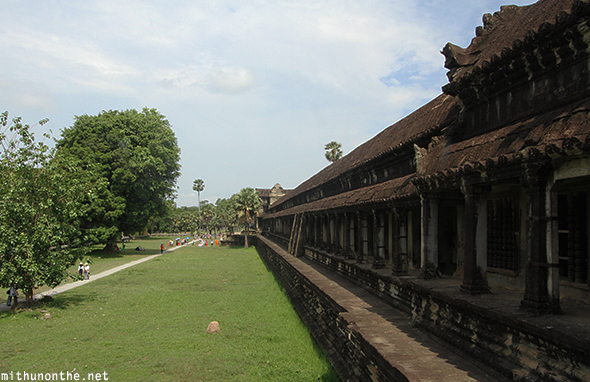
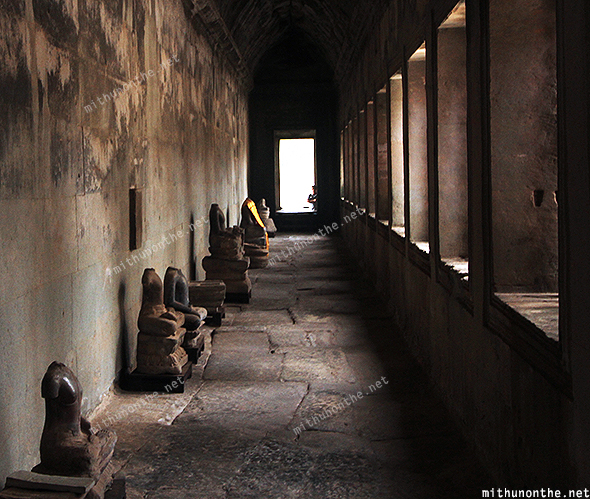
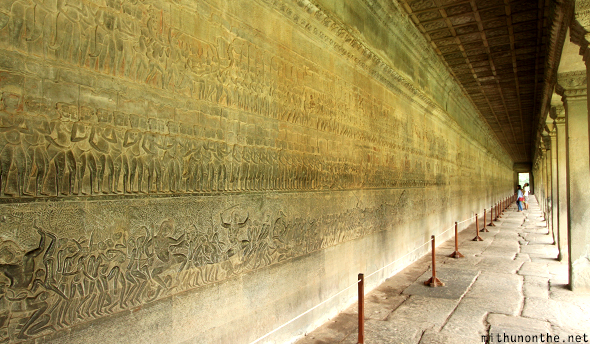
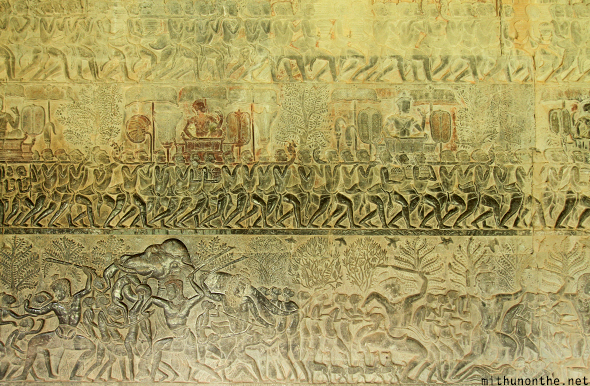
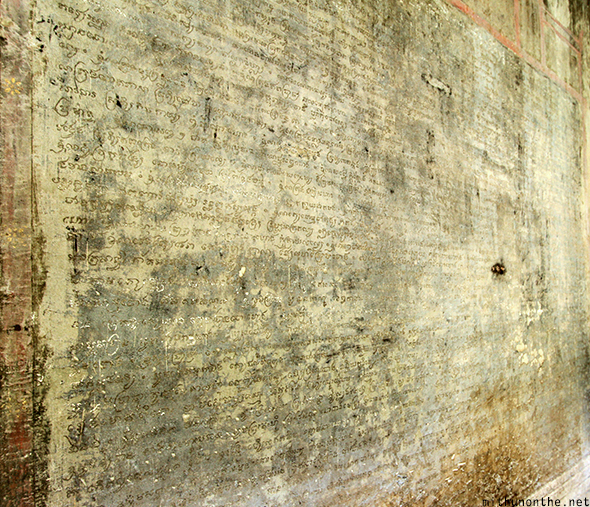
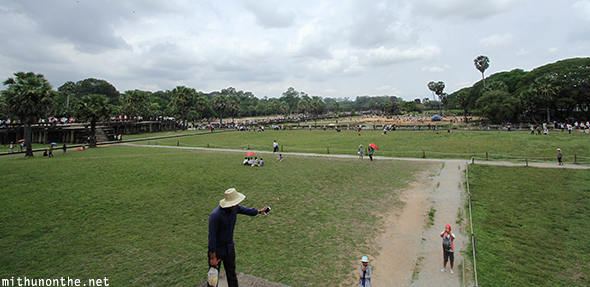
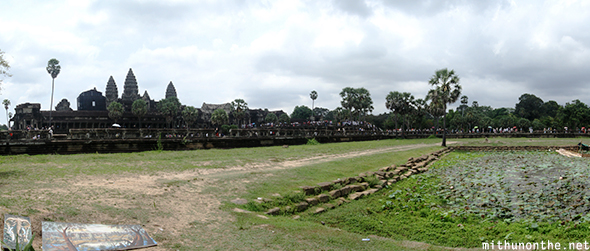
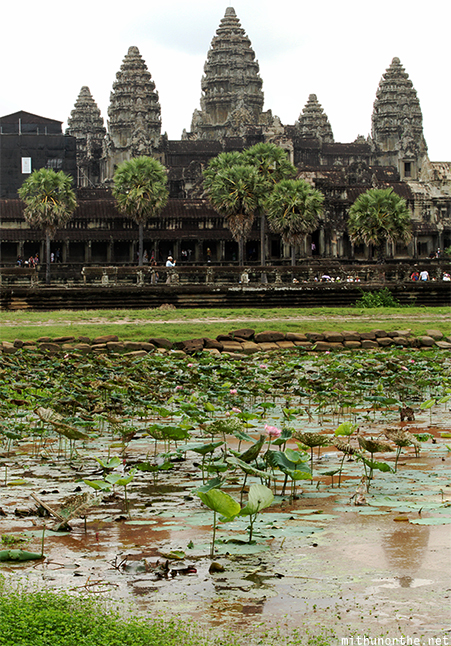
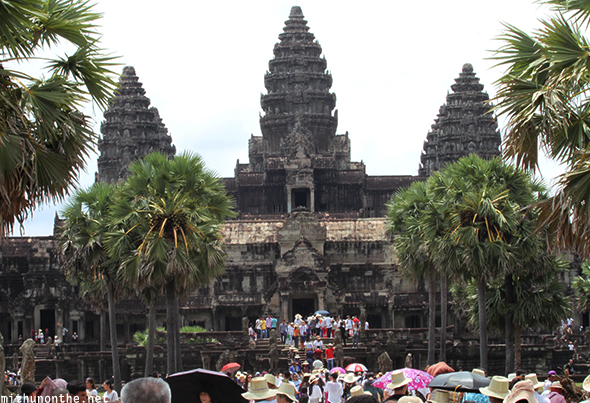
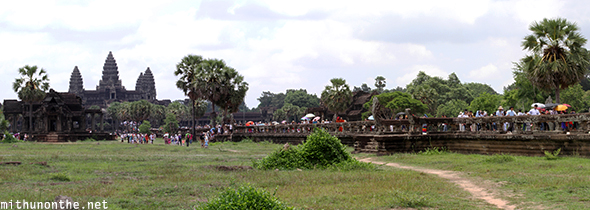
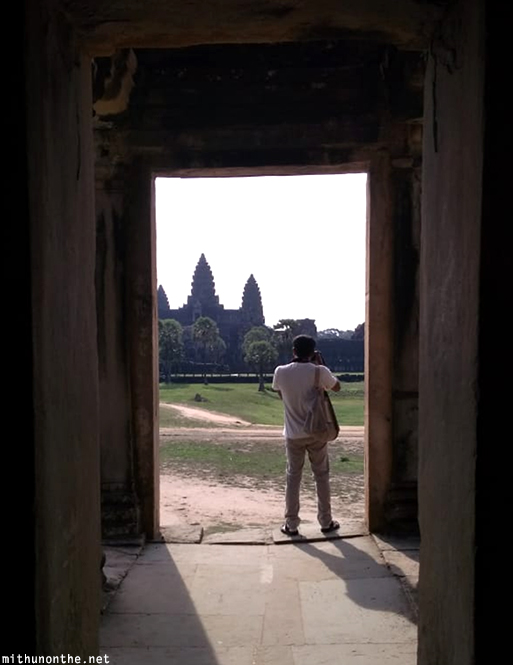
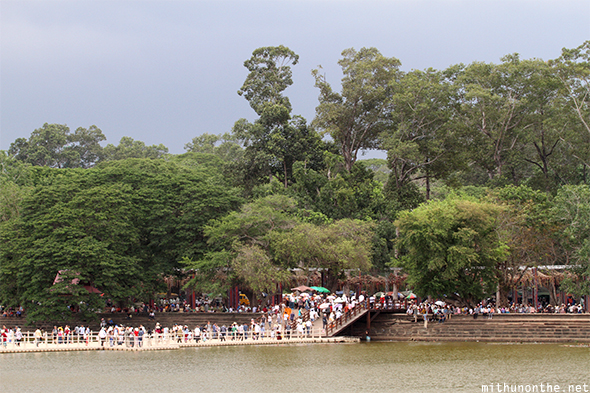
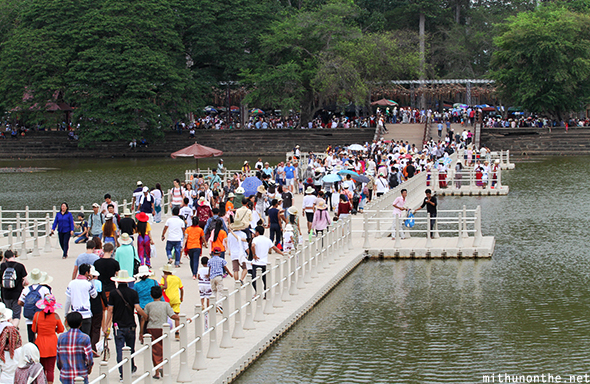
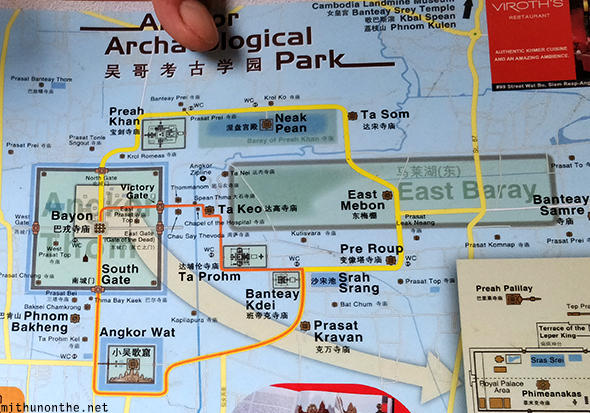
And so, off we went to our next stop — Bayon — which is the next most popular temple in the Angkor archaeological park. That will be the next post.
Next post(s) in this series:
Cambodia: Bayon temple – the one famous for stone faces
Previous posts in this series:
Cambodia: Phnom Penh to Siem Reap by bus
Cambodia: Royal Palace and Silver Pagoda in Phnom Penh
Cambodia: Mekong River Sunrise Cruise… and an insight into Chinese investment in the region
Cambodia: Phnom Penh Central Market and Wat Phnom
Cambodia: S21, the Tuol Sleng Genocide Museum
Cambodia: Choeung Ek genocidal center — the infamous “Killing Fields”
Cambodia: Sisowath Quay, Phnom Penh Night market
Cambodia: Arriving in Phnom Penh

